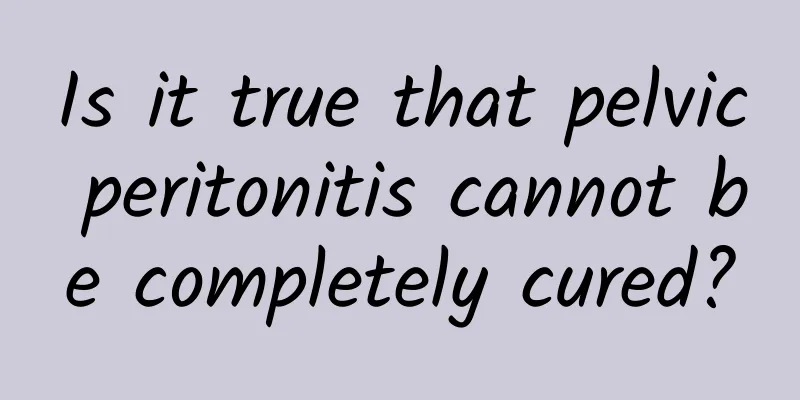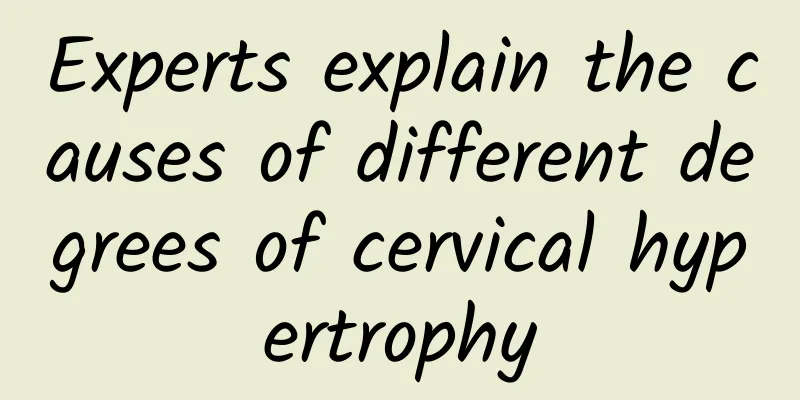Is it true that pelvic peritonitis cannot be completely cured?

|
In life, many women suffer from pelvic peritonitis. Television advertisements often introduce basic treatment methods, but some people are often very confused and don't know which treatment method to choose. So is pelvic peritonitis really incurable? Here is a detailed introduction for everyone. The answer is yes, pelvic peritonitis can be completely cured. Here are the treatments. When treating this disease with traditional Chinese medicine, we should distinguish between cold, heat, deficiency and excess, and treat it based on syndrome differentiation: (1) Damp-heat descending type: Treat by clearing away heat and removing dampness. Prescription: 10 grams of Phellodendron chinense, 10 grams of Achyranthes bidentata, 12 grams of Poria cocos, 12 grams of Plantago seed (package), 6 grams of Alisma orientalis, 12 grams of Paeonia lactiflora, 10 grams of Moutan bark, 6 grams of Artemisia capillaris, and 10 grams of Atractylodes lancea. If the abdominal pain is obvious, add 10 grams of Yuanhu and 10 grams of Chuanlianzi to promote qi and relieve pain; if the appetite is poor and the stool is loose, replace Atractylodes with stir-fried Atractylodes 10 grams, add 18 grams of Poria and 20 grams of raw Coix seed to strengthen the spleen and eliminate dampness. (2) Blood stasis and heat syndrome: Treat by promoting blood circulation and removing blood stasis, clearing away heat and detoxifying. Prescription: 15 grams of Angelica sinensis, 15 grams of Corydalis yanhusuo, 20 grams of Patrinia chinensis, 15 grams of Rhubarb with wine, 15 grams of Red Peony Root, 12 grams of Cyperus rotundus, and 15 grams of peach kernel, decocted in water and taken orally. If there is obvious stinging pain in the lower abdomen, add 10g of frankincense and 10g of myrrh to dissipate blood stasis and stop bleeding; if there is obvious distension and pain in the lower abdomen, add 10g of Chuanlianzi and 10g of Zhiqiao to promote qi and stop pain; if the menstrual flow is scanty, dark in color and clots, add 20g of Leonurus japonicus to promote blood circulation and dissipate blood stasis. If the leucorrhea is heavy and yellow in color, add 15g of Artemisia capillaris and 12g of Alisma orientalis to clear dampness and heat. (3) Cold-dampness stagnation type: Treat by warming the yang and dispelling cold, activating blood circulation and removing dampness. Prescription: 9 grams of fennel, 6 grams of dried ginger, 12 grams of angelica, 9 grams of Chuanxiong, 9 grams of cinnamon twig, 12 grams of red peony root, 10 grams of myrrh, 10 grams of mugwort, 10 grams of Atractylodes macrocephala, 15 grams of Poria, 10 grams of Zedoaria, and 10 grams of Red Rhizoma. Boil in water and take. |
<<: Can pelvic peritonitis heal on its own?
>>: Can pelvic peritonitis in women be cured?
Recommend
Some foods high in hormones can trigger uterine fibroids
Some foods with high hormone pollution can trigge...
To prevent ectopic pregnancy, you need to do the following:
"What are the precautions to take to prevent...
What should I do if adolescent girls have amenorrhea?
If a girl over 18 years old has not had her perio...
Are there many cases of hyperprolactinemia being cured?
It is understood that the incidence of hyperprola...
Introduce some knowledge about pregnancy symptoms
Many girls, after getting married, are not aware ...
What are the treatments for vaginitis?
Vaginitis is a very common gynecological disease,...
What are the advantages of radiofrequency ablation for the treatment of cervical erosion?
There are many ways to treat cervical erosion, an...
Can acupuncture be used to treat irregular menstruation?
Acupuncture is one of the external treatment meth...
Follow the therapist to do 6 animal brain exercises
"To live, you must move!" According to ...
Postpartum or postabortion infection is one of the causes of pelvic inflammatory disease
The causes of pelvic inflammatory disease can som...
What are the dangers of menopause?
Modern society has caused health problems for wom...
What are the specific causes of cervical erosion?
What are the specific causes of cervical erosion?...
The most common symptoms of menstrual irregularities in menopausal women
The symptoms of irregular menstruation in women h...
What are the causes of secondary dysmenorrhea?
Dysmenorrhea is just a symptom. Many diseases can...
Common factors that may cause cervicitis
Many female friends want to know why they get cer...









